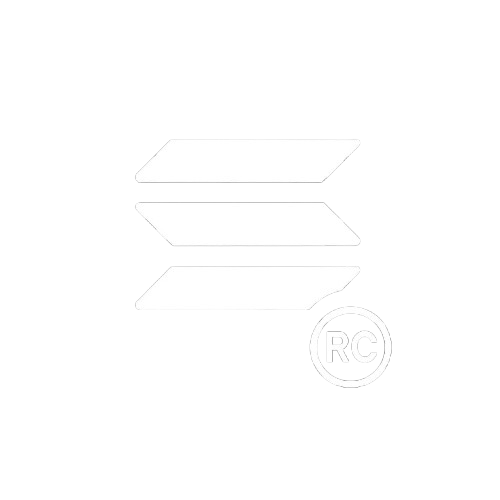
Complete Definition of RC Token (Residual Claim Token)
Introduction
The RC Token (Residual Claim Token) is one of the fundamental innovations introduced by the Dual Value Tokenization Model (DVTM) within the CNBM ecosystem.
It revolutionizes traditional collateralization in decentralized finance (DeFi) and forms the structural backbone of CNBM's issuance, stability, and revenue logic.
How RC Tokens Are Created
Token Creation Process
When users deposit digital assets (such as ETH, BTC, or tokenized real-world assets) into the DBanks smart contract, two tokens are simultaneously minted:
- CNRWA: Like CNUSD, a stablecoin pegged to $1 or CNGOLD, a CNAsset pegged to 1 gram of gold.
- RC Token: A dynamic token representing the remaining value of the asset, absorbing all price volatility.
Example:
Deposit 1 ETH valued at $2,000 → Receive 1 CNUSD (worth $1) + 1 RCETH (worth approximately $1,999).
Core Roles and Use Cases of RC Tokens
Key Functions
- Volatility Absorption
RC tokens absorb all price fluctuations of the underlying asset, ensuring correspondent CNRWA remains fully stable. - Access to Residual Value
RC holders retain exposure to the price movements of the underlying asset as if they were still holding the original asset. - Collateral Utility
As an innovative derivative token, RC can be used as collateral to mint new assets, or to obtain loans from DBanks and RCBanks within the CNBM ecosystem. - Liquidity and Tradability
RC tokens are freely tradable across DeFi markets, enabling trading, staking, collateralization, and participation in broader financial opportunities.
Exclusive RC Debt Issuance in Select DBanks
Debt Issuance System
In this system, only RC tokens are accepted as collateral.
How it works:
- Users lock RC tokens and receive a portion of the base asset without paying interest or facing maturity dates.
- Upon repayment of the borrowed amount, the locked RC tokens are fully unlocked.
Example:
Lock 1 RCSOL → Receive 0.5 SOL (LTV = 50%) → Repay 0.5 SOL → Retrieve 1 RCSOL
Key Insight: This model introduces a new form of Living Debt Collateralization, allowing assets to remain "alive" and accessible — unlike traditional systems where collateral is entirely frozen.
Redemption Process
Asset Redemption
To fully reclaim the original deposited asset, users must return both:
- 1 CNRWA (CNCurrency like CNUSD or CNASSET like CNGOLD)
- 1 corresponding RC token
Example:
Return 1 CNUSD + 1 RCETH → Retrieve 1 ETH.
Unique Features of RC Tokens
Key Features
- Directly represent real asset value (not synthetic tokens)
- Maintain full exposure to underlying asset volatility
- Enable creation of new hybrid derivatives
- Highly liquid and freely tradable across DeFi markets
- Establish a new foundation for live, dynamic collateral models
Debt-Based Minting in RCBank
In this innovative model, RC tokens are accepted as collateral within RCBank for minting the stablecoin CNRWAs.
Users lock RC tokens and receive CNRWAS based on a fixed Loan-to-Value (LTV) ratio, calculated from the dollar value of the underlying asset.
This is a debt-based minting mechanism, where the issued CNRWAS acts as a loan. To retrieve their locked RC tokens, users must repay the borrowed amount. If the collateral value falls below the liquidation threshold, the position may be liquidated.
Key Innovation:
This model introduces a novel method of leveraging existing collateral stored within DBanks — without any physical movement or disruption of the original vaults. RC tokens act as a bridge, enabling collateral-backed debt issuance while maintaining the security and integrity of the DBank treasury.
It creates a dual-layer vault system, where both native and RC-backed treasuries operate in parallel — unlocking fresh liquidity without compromising custody or systemic stability.
Final Summary
Conclusion
The RC token is not just a supporting tool — It is the structural foundation of CNBM's financial architecture: ensuring stability, enabling liquidity, sharing revenues, and powering the ecosystem's economic loop.
RC is not a companion; RC is the condition.